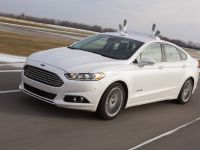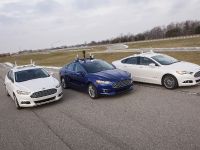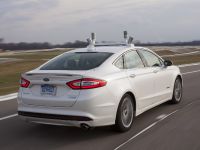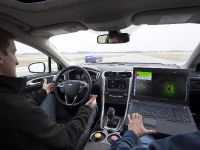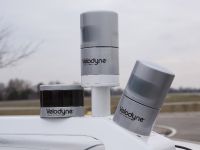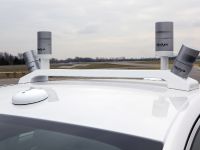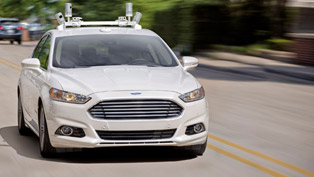Automated Fusion Hybrid Research Vehicle By Ford
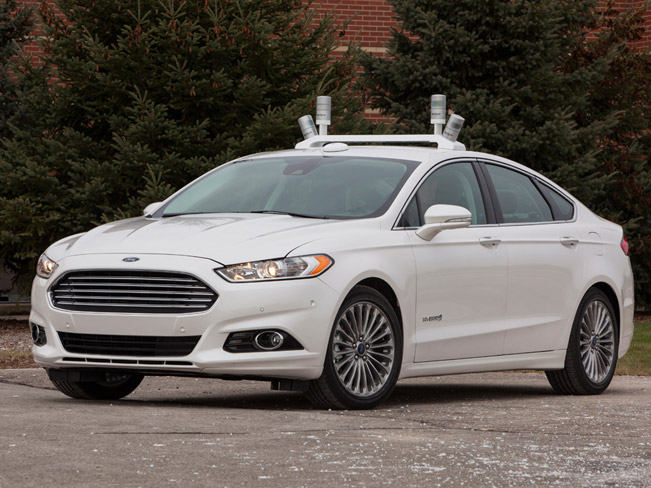 Ford in conjunction with the University of Michigan and State Farm has just revealed a new project - a Ford Fusion Hybrid automated research vehicle. The latter will be utilized in order to make progress on future automated driving and other future technologies.
Ford in conjunction with the University of Michigan and State Farm has just revealed a new project - a Ford Fusion Hybrid automated research vehicle. The latter will be utilized in order to make progress on future automated driving and other future technologies.
Precisely, Fusion Hybrid automated vehicle will test brand's sensing systems and driver-assist technologies in order to deliver better experience for the driver and occupants in the future models.
Nowadays, Ford offers vehicles which already have technology that enables them to park themselves, understand a driver's voice commands, detect dangerous driving situations and assist with emergency braking. Taking this in hand and imagining how many other new advanced technologies will appear, Ford envisions that one day all this could allow a person to be driven to a destination.
For this reason, the brand now introduces the automated Fusion Hybrid which will serve as the research platform for achieving these goals. The Fusion Hybrid research vehicle builds on driver-in-control studies conducted in Ford's VIRTTEX driving simulator.
In addition, the brand is working in terms of improving technology already used in vehicles on the road. This includes functions that alert drivers to traffic jams and accidents, and technologies for parking and for driving in slow-moving traffic.
In addition, the engineers at the brand also work on vehicle-to-vehicle communications, autopilot capabilities of the cars, and vehicles with fully autonomous navigation and parking. Ford Fusion Hybrid was chosen as the test platform for the new research effort because it is one of the cars which offer the most advanced driver-assist technologies in its class.
To go further into details, these technologies include Blind Spot Information System, active park assist, lane-departure warning, and adaptive cruise control and collision warning with brake support. And exactly these systems will be building blocks for the future of fully automated driving.
Other Ford vehicles which include these technologies are the Focus, C-MAX hybrids, Fusion, Taurus, Escape, Explorer, Flex, Mondeo, S-MAX and Galaxy. What is more, the research vehicle also includes four scanning infrared light sensors – named LiDAR (for Light Detection And Ranging) – that scan the road at 2.5 million times per second.
LiDAR utilizes light in the same way a bat or dolphin uses sound waves. This means that the sensors can track anything dense enough to redirect light, and can also sense the difference between a paper bag and a small animal at nearly a football field away.
Source: Ford
